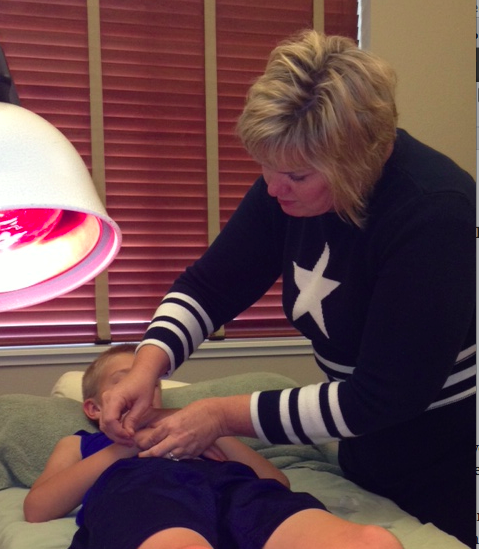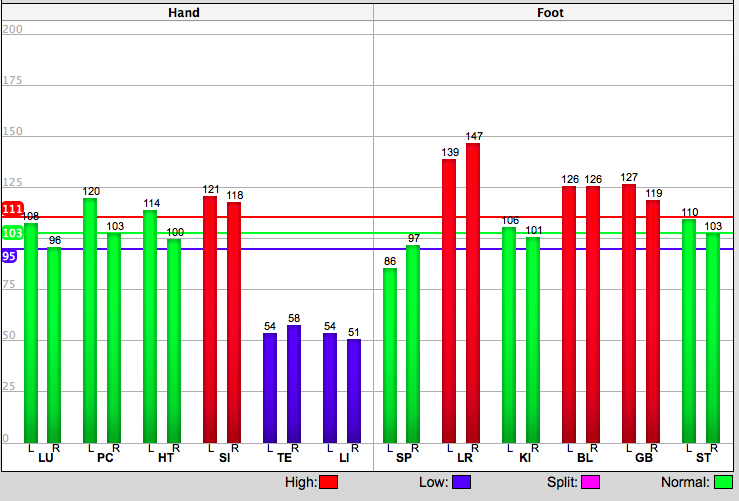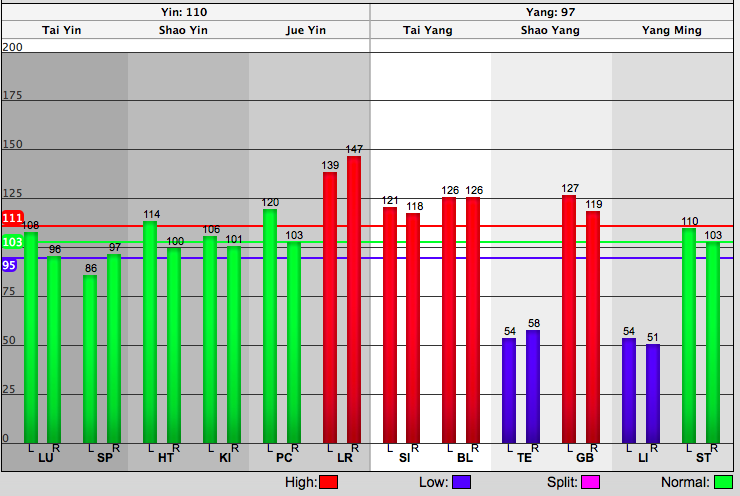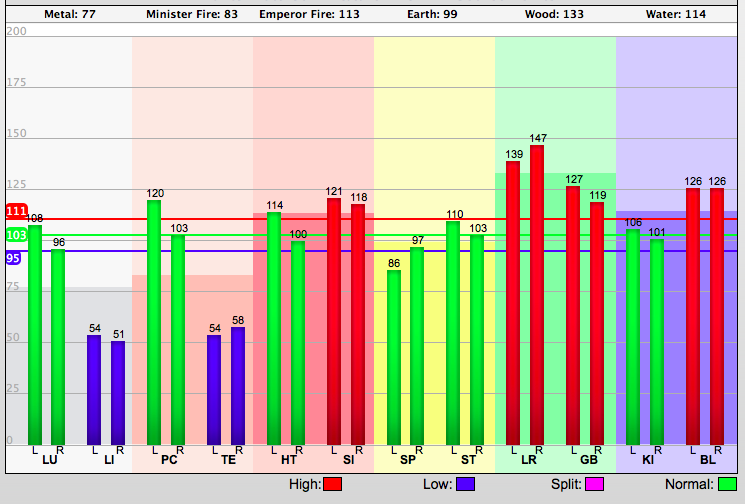Last week we discussed ADD/ADHD from a TCM pattern perspective. Here’s the link in case you missed it. ADD/ADHD Case Study–Part 1
As a quick review, we learned that the main TCM patterns related to ADD/ADHD are:
• Heat
• Heat and Phlegm
• Spleen Deficiency
• Kidney Deficiency
Today we will analyze the graph of an ADD/ADHD child–and I’ll show you how AcuGraph has been “kid tested and mother approved” in my very own acupuncture clinic.
.
Case Study:
11-year-old-male
• Emotions: Frustration, worse in the morning; parents have to constantly push, which leads to yelling. Occasional panic attacks. Holds emotions in and then screams into his pillow as an outlet. Better if he can run or ride his horse.
• Diet: Grilled cheese and pizza kind of kid. Would choose these always IF mom would let him.
• Digestion: Gas and stomach ache.
• Sleep: Trouble falling asleep and staying asleep; bad dreams 50% of the time; nighttime incontinence.
• School: Dyslexia, likes to read, self-confidence issues.
• Pain: Headache between the eyes (at Yin Tang), radiating up to the top of his head, caused by yelling or dehydration, sharp and throbbing in nature; neck and shoulder tension.
• Other: No palpitations, but feels heartbeat in the tip of his forefinger and his neck; eye twitching.
Chief complaint: ADD
I’m going to walk you through my own thinking process when I’m looking at a graph for a new patient. I’ll also alert you to things I’m seeing in the graph, which lead me to ask further questions.
STEP 1:
Baseline Graph
In the baseline graph, I’m looking at the differences between the hand and foot channels. What is happening in the upper body (hand) channels versus the lower body (foot) channels.
For this patient, you’ll notice there seems to be more excess in the lower body channels than the upper body channels. An easy way to confirm my thoughts is to look at the Ratio Graph….
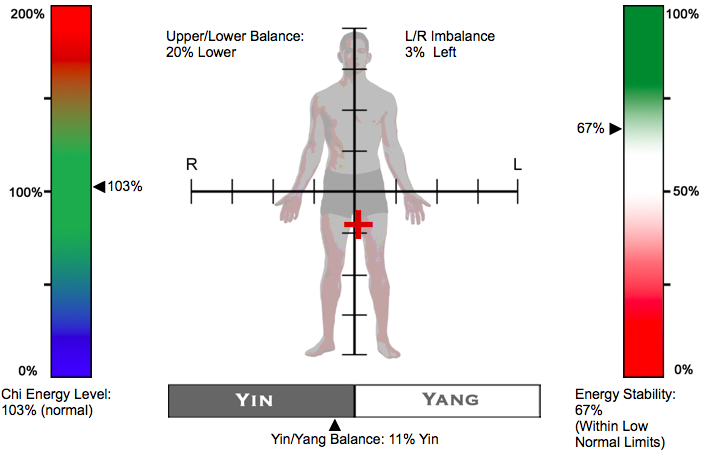 Notice how the red plus sign is lower. When the upper body and lower body channels are well balanced, the cross will be find right in the center of the screen.
Notice how the red plus sign is lower. When the upper body and lower body channels are well balanced, the cross will be find right in the center of the screen.
Thought: I may consider treating the Dai Mai for this patient…. TE 5, GB 41
STEP 2:
Yin/Yang Graph
The significant thing I see here is excess in the Small Intestine and Bladder channels in the Tai Yang channel pairing. I’ve typically found that when there is excess in these channels it relates to tendinomuscular problems.
Question: Are you having any neck, back or shoulder pain?
I also notice that the Triple Energizer is deficient in comparison to the Gallbladder in the Shao Yang channel pairing.
Thought: More confirmation for treating the Dai Mai… TE 5, GB 41
STEP 3:
Element Graph
He has several elements out of balance, but the first one that jumps out at me is Wood. Both the Liver and GB are high.
Questions:
- Do you get headaches?
- Do you get angry easily?
- Have you had a hernia? (If he were an adult I’d ask about prostate issues.)
- Do you have any eye twitches?
Some interesting information came up when I clicked on the LV channel and showed it to mom. When I explained how the Liver channel goes up the inside of the leg and encircles the genetalia, she was quickly reminded about a surgery he had for undescended testicles.
Thought: Wondering if child has scar tissue build up from the undescended testicle.
STEP 4:
Treatment
- Dai Mai: Because he was a child, and it was his FIRST experience with acupuncture, I decided to use as few needles as possible. I knew I could make a big difference by balancing energy between the upper and lower body. TE 5, GB 41
- Move Liver Qi: LR 3
- Ear treatment: I looked up the ADD/ADHD program in Auriculo 3D and treated the electrically active points with my StimPlus Pro. (He thought that was the coolest thing ever.) I then put ear seeds on the active points and asked him to self-treat from home by pressing on the seeds several times per day. (We talked about how he could tell his friends that a Chinese Ninja gave him the ear seeds for special power.)
AcuGraph’s Contribution
Before AcuGraph, I would have come up with a standard pattern approach to treatment. AcuGraph allows me to watch the pattern diagnosis along with channel blockages. I’ve found that channel blockages can actually cover the real underlying pattern diagnostics and if channel excesses and deficiencies are dealt with first, the underlying pattern begins to shine through.
This patient, for instance, became more of a Spleen deficiency patient within a few visits. Once we took care of his channel imbalances, his Liver heat symptoms resolved and he presented more with a Spleen deficiency constitution. At this point, we discussed dietary recommendations and herbal formulas to strengthen his Spleen.
I appreciate having multiple diagnostic skills while treating a patient. Most patients who walk into my practice have an array of problems involving layers of imbalances. AcuGraph helps me to sift through the layers week by week. It’s nice to have a series of graph analyses to show the patient where they began and how far they have progressed.
Using AcuGraph as a resource for diagnosing and treating children has really paid off in my clinic. Parents appreciate having a report of findings.
Kids aren’t always great at explaining what is happening in their bodies, but that’s okay because AcuGraph is!
.
Becoming a Pediatric Expert
Are you ready to expand your pediatric practice, but you need more training? Many acupuncturists know they can help kids with acupuncture but are unsure how to actually treat kids. Our friend and fellow AcuGraph user, Robin Green L.Ac., has distilled her years of pediatric experience into a new online course called Pediatric Essentials.
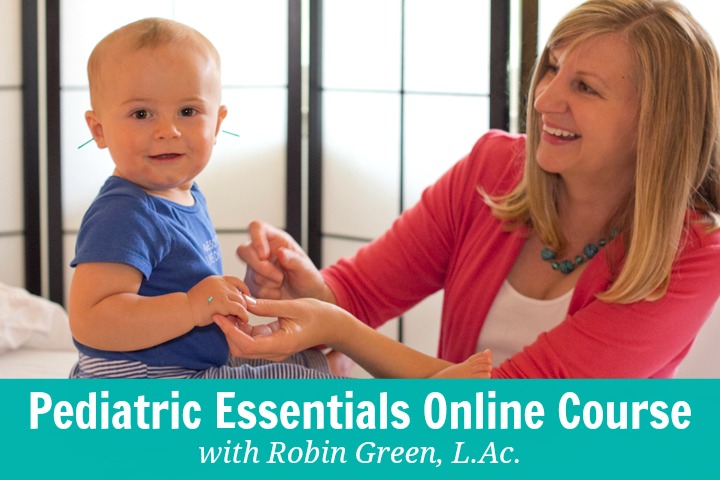 Robin’s course will give you the practical tips you need to get the job done – without fuss. Robin will cover all the best ways to work with both parents and children to make both acupuncture and non-needle treatments fast, easy and effective.
Robin’s course will give you the practical tips you need to get the job done – without fuss. Robin will cover all the best ways to work with both parents and children to make both acupuncture and non-needle treatments fast, easy and effective.
You’ll learn how to get kids comfortable with needles, and to take pediatric herbal formulas. She’ll give you strategies for treating the most common conditions in kids–with real-world tips that get results.
Even Better: If you register for Pediatric Essentials by November 8th you’ll get my Special Pediatric AcuGraph Training Bonus!
Talk to you soon!
Kimberly Thompson, L.Ac.
Acupuncture Research Analyst
Miridia Technology In
Robin will cover guidelines that make it easy for you to give acupuncture and non-needle treatments to kids. She will teach you how to use laser to treat kids. You’ll learn how to get kids to take pediatric formulas and basic nutrition that supports healing. She’ll give you strategies for treating the most common conditions kids come in for – with real-world tips for implementing them.
